- Established 1982 -HOME: www.hiltonpond.org
THIS WEEK at HILTON POND Subscribe for free to our award-winning nature newsletter (Back to Preceding Week; on to Next Week) |
All text, maps, charts & photos © Hilton Pond Center 6,000 RUBY-THROATS, Shortly after lunch on the afternoon of 6 July, we were so busy multi-tasking outdoor chores that an auspicious milestone very nearly slipped past us: At 1:20 p.m. we trapped an adult female Ruby-throated Hummingbird (above), banded her, color marked her with a necklace of temporary green dye, and released her unharmed. Later on in the day as we transcribed our field data into the computer, we realized that particular bird had the honor of being the 6,000th of her species banded at Hilton Pond Center. Although not a lot of biomass--at an average of 3.25 grams per ruby-throat that would come to only about 43 pounds--this particular bird represented countless hours and nearly 35 seasons of on-going research that began in July 1984 with our first hummer banded locally.
All text, maps, charts & photos © Hilton Pond Center We began what seems like a lifetime of hummingbird work in a simple way. Before returning to South Carolina after four years of University of Minnesota grad studies into behavioral ecology of Blue Jays, in March 1982 (above) we purchased a house with pond on 11 acres near York and established what is now Hilton Pond Center for Piedmont Natural History.
All text, maps, charts & photos © Hilton Pond Center Along with our offerings of cracked corn, shell corn, white millet, and thistle we also hung several hummingbird feeders and filled them with 4:1 water:sugar mix that closely mimics natural nectar. We soon had Ruby-throated Hummingbirds coming to drink (immature male, above), but because hummer banding requires special authorization from the banding lab we were not allowed to capture such tiny birds. As anticipated, all our ruby-throats left Hilton Pond Center by mid-October but showed up again in Spring 1983 to lap from our feeders. Once more we watched them all season until they departed, wondering how many hummers we might be hosting. Counting hummingbirds by watching feeders isn't a very accurate way to determine a local population, so in early 1984 we applied to the BBL for hummingbird banding authorization. In the early 1980s only a few dozen people were working with hummingbirds in the U.S. and Canada, and most were in western states where many more hummingbird species occur. Unfortunately, in those days there were no training workshops on the intricacies of making and applying hummer bands, and there were no YouTube videos to learn from.
All text, maps, charts & photos © Hilton Pond Center Unlike other bands that come pre-formed in strings of 100, hummingbird bands are photoengraved on sheets of thin aluminum in lots of 300 (above) and must be fabricated to make a ring. Initially we cut bands into strips using scissors, snipped off a single band, smoothed rough areas with a corundum nail file, and formed every single band by bending the tiny piece of metal around a crochet hook of proper diameter--a meticulous, time-consuming activity. We then applied the band around the bird's leg by squeezing it between thumb and forefinger until the ends butted together; needless to say, this required considerable care and dexterity. These days we have specialized tools for cutting and forming bands a little faster and with much greater precision--although a fine touch is still a necessity for the hummingbird's well-being.
All text, maps, charts & photos © Hilton Pond Center Our hummer banding authorization and 300 bands arrived from the BBL on 27 July 1984, at which time we became self-taught in the art and science of catching and banding hummingbirds. We had already designed our own pull-string contraptions (example above) with which to capture hummers, so it was simply a matter of baiting each trap with a sugar water feeder and sitting back to wait for a bird to enter. Based upon feeder observations, we estimated we had about 25 ruby-throats at the Center; imagine our surprise when in just our first four days we trapped and banded 75! (This gave rise to "Hilton's Rule of Thumb," which states you probably have three times more hummingbirds than you think. In years since, this 3:1 ratio has been borne out at several places where we've banded.) That first year (1984) we banded a grand total of 114 Ruby-throated Hummingbirds--even though we had missed the first four months of hummer season and caught none after 24 September.
Ruby-throats trickled in through late July 1985 until numbers suddenly increased as more young birds fledged and adults spent more time just flying around and feeding. That year we ended up with 144 new RTHU, just 30 more than in the partial season the year before. We were also pleased in 1985 to confirm hummingbird site fidelity at Hilton Pond Center by recapturing 17 individuals banded the previous year. Each of these, we suspect, departed North America to spend the winter in Central America or southern Mexico. All text, maps, charts & photos © Hilton Pond Center Our third year (1986) was even better with 161 hummers banded, and on average the number of Ruby-throated Hummingbirds at Hilton Pond has continued to increase annually in the three decades since (see chart above)--reaching an astonishing new record of 373 hummers banded in 2016. It is significant that in ten of the most recent 14 years we were over the 200 mark, which never happened during our first 20 years of work. This year (2018) we've banded only 62 RTHU through 15 July, but that figure is misleading; this is our third fastest start for banding hummers in 35 years. (In other good news, in 2018 we've also recaptured 44 ruby-throats from previous seasons, already making this the fourth best year for returns. The record--62--was set in 2017; not surprisingly, that was the year after our record-breaking 373 bandings.)
All text, maps, charts & photos © Hilton Pond Center Our cumulative results beg the question: Are there more Ruby-throated Hummingbirds these days than in the 1990s? We've spent about the same time each year manning traps and deploying mist nets, and we don't think the habitat at the Center has changed in a way that supports far more hummers. It's possible (but unlikely) numbers are increasing because we are somehow getting better at capturing hummingbirds, although we admit the six Dawkins-style traps (above) we deploy most days spring through fall are remarkably efficient. In any case, the upward slope of the dotted red trend line on the previously referenced 35-year chart leads us to believe the size of the our hummer population really IS on the rise. Whether this is a local phenomenon or true across the species' entire range is impossible to deduce from one station's banding data, but we wouldn't be surprised to learn the opportunistic Ruby-throated Hummingbird--which has no competing hummer species within its breeding range---is undergoing at least a minor population boom.
All text, maps, charts & photos © Hilton Pond Center After all, ruby-throats are birds of the edge, and nearly every suburban back yard has "four edges." (It sounds like environmental heresy, but Ruby-throated Hummingbirds--immature male above--are a species that might actually benefit from moderate habitat disturbance.) Furthermore, many people grow nectar plants for hummers and these days practically everyone we know hangs a couple or three sugar water feeders--thus attracting these tiny wonders to an energy-rich food source that likely helps at least a little with species survival. Now that we've reached the 6,000-bird plateau, it will be interesting to see if the Ruby-throated Hummingbird population at Hilton Pond Center (and elsewhere) continues to grow in coming years. All text, maps, charts & photos © Hilton Pond Center
Adult male Ruby-throated Hummingbird (above; note band and green color mark) 6,000 RUBY-THROATS, To celebrate the banding of our 6,000th Ruby-throated Hummingbird during the past 35 years of research, Hilton Pond Center is undertaking a fund-raising effort in support of "Operation RubyThroat: The Hummingbird Project." Our goal this summer is to raise ONE DOLLAR for each of the 6,025 hummers banded locally through 15 July of this year. If you'd like to support our on-going study of hummingbird migration, site fidelity, longevity, and population dynamics in the U.S. and in Central America, please click on one of the links below to send a tax-deductible donation. (You can also donate through our Facebook fundraising page.) Checks also can be sent to Hilton Pond Center at: All contributions are tax-deductible on your Don't forget to scroll down for Nature Notes & Photos, |
|---|
|
"This Week at Hilton Pond" is written and photographed by Bill Hilton Jr., executive director of Hilton Pond Center for Piedmont Natural History
|
|
|
Please refer "This Week at Hilton Pond" to others by clicking on this button: |
Comments or questions about this week's installment? Send an E-mail to INFO. (Be sure to scroll down for a tally of birds banded/recaptured during the period, plus other nature notes.) |


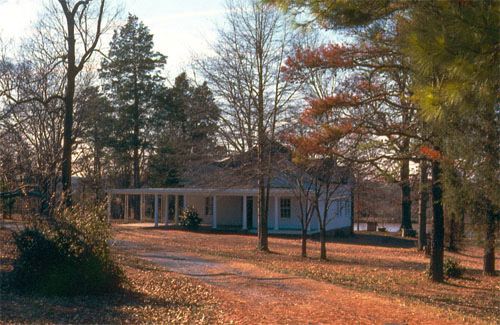
 We wanted to continue our jay work and to band other birds on the property as part of what we envisioned as a long-term study of avifauna and natural succession in the Carolina Piedmont. To that end we received our Master Bander Permit from the federal Bird Banding Laboratory
We wanted to continue our jay work and to band other birds on the property as part of what we envisioned as a long-term study of avifauna and natural succession in the Carolina Piedmont. To that end we received our Master Bander Permit from the federal Bird Banding Laboratory 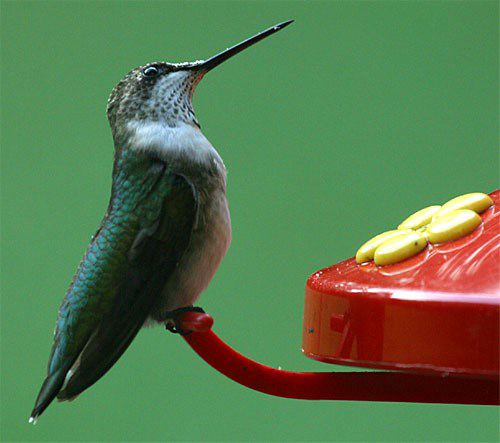

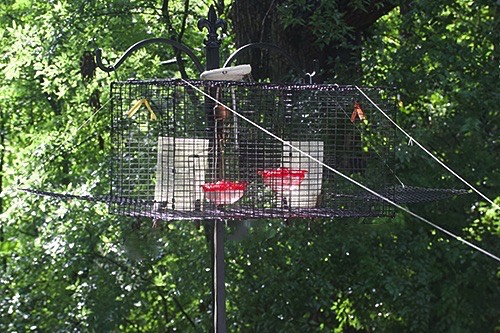
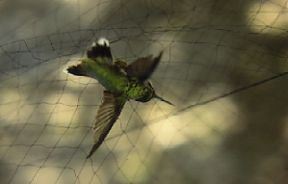 The next year
The next year 
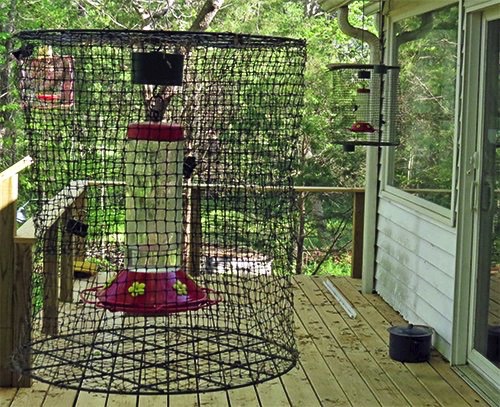
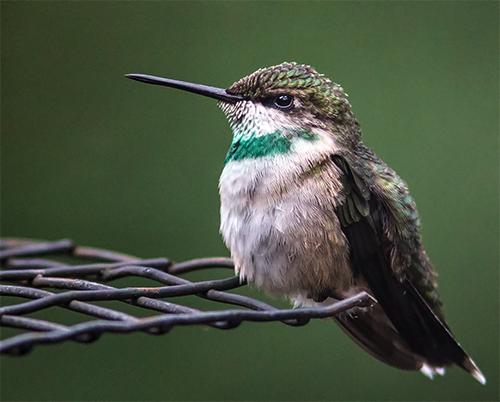
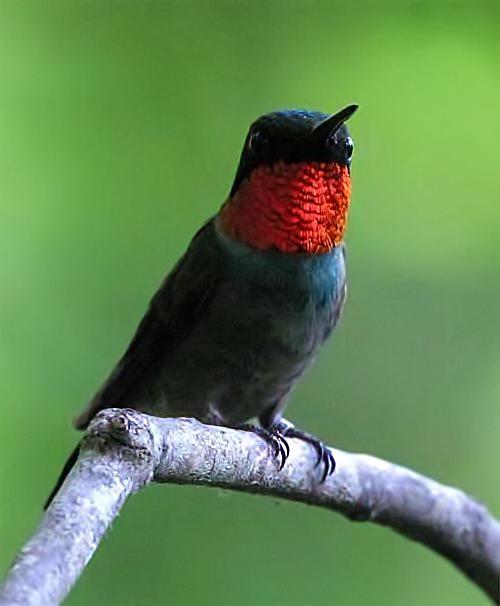









 Please report your
Please report your